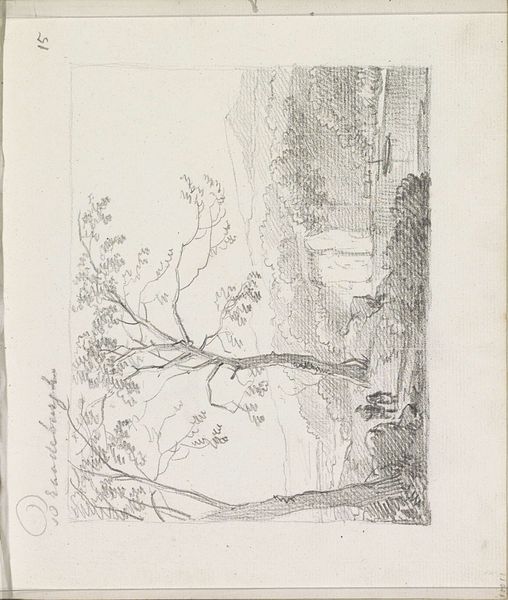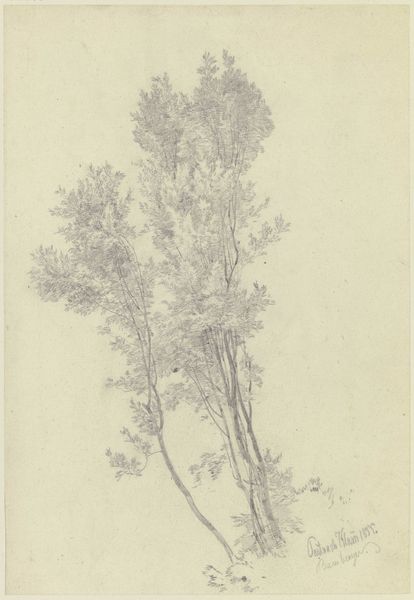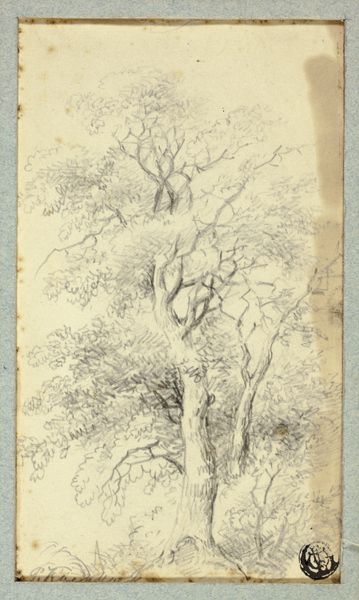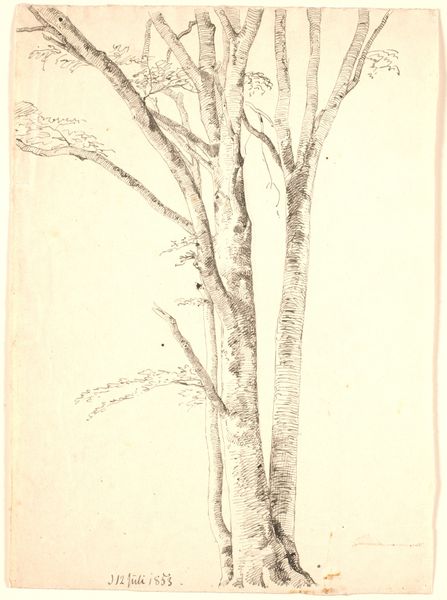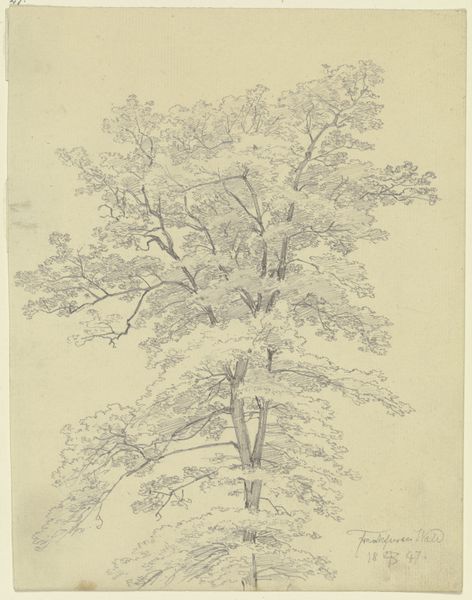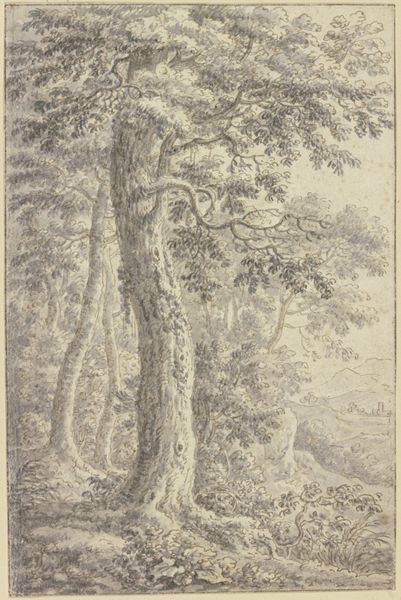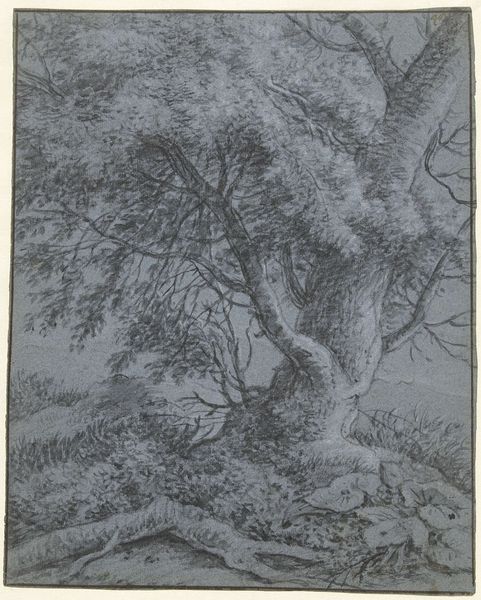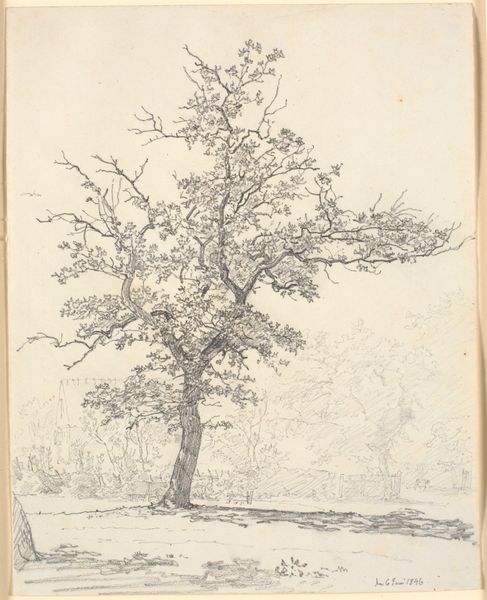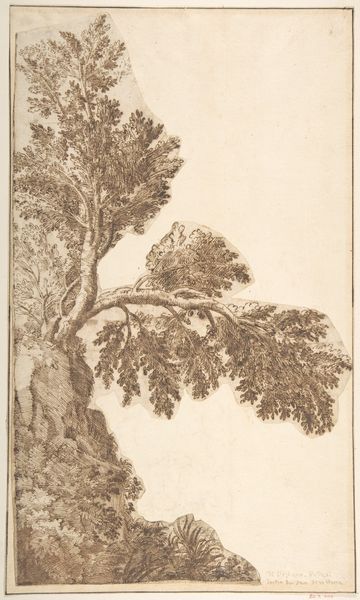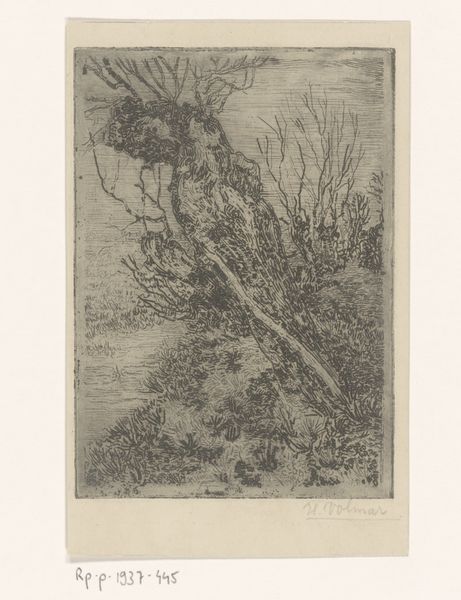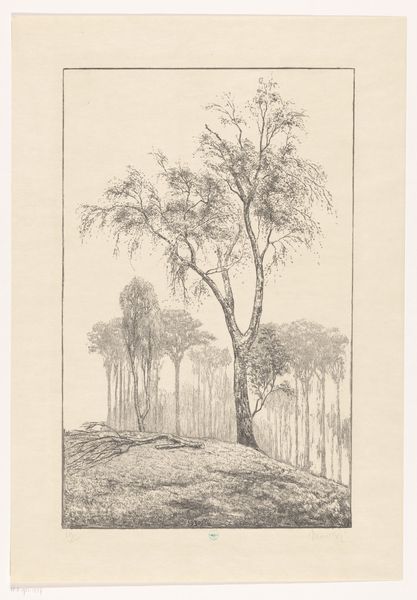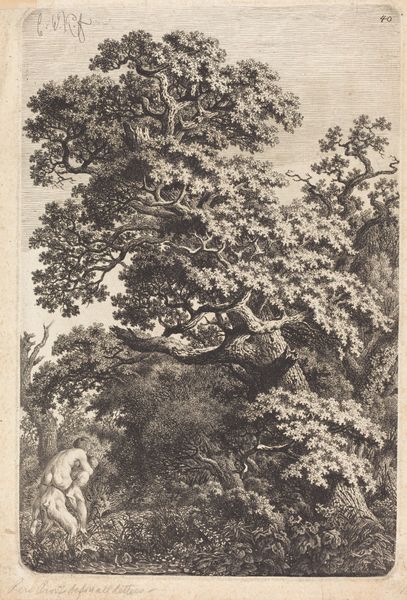
print, etching
# print
#
etching
#
landscape
#
etching
#
romanticism
Dimensions: 168 mm (height) x 116 mm (width) (bladmaal)
Curator: Looking at this print, I’m immediately struck by its incredible detail, like a tiny universe contained within this frame. It’s dense, almost overwhelmingly so, yet strangely peaceful. Editor: Indeed! This is Jens Peter Lund's "Illustration til Oehlenschlägers Digte i 'Gæa'," an etching from 1845. What you're responding to so viscerally is characteristic of the Romantic movement, with its deep fascination for nature, here visualized with an intensity bordering on hyperrealism. Curator: Hyperrealism is a perfect term. It feels like staring directly into the soul of a tree, you know? Like you can almost smell the damp earth and hear the rustle of the leaves, and maybe even feel the pain and anguish that has passed. It evokes something quite spiritual. Editor: The tree depicted, especially in Romanticism, stands often for a connection to one’s heritage, the ancient folklores. Think about its symbolic power for identity, the organic reaching towards light and life! Here we are, centuries later, perhaps not so different from those it was intended to inspire. It speaks across time of humanity’s struggle for freedom and purpose. Curator: Right! Now, looking more closely at Lund's mark-making, it’s like he meticulously documented every single leaf and branch and root. Every line serves a purpose. It really allows him to convey not only shape and form, but an incredible light too. What do you feel that reflects for the audience and reader here? Editor: Considering Oehlenschläger’s poems for “Gæa,” these works would have been circulating during an age when Danish national identity was in formation. What looks simply like landscape is steeped in political context. Look closely: Are those tree branches framing us? Are we part of this intimate Danish garden that has political and societal importance in Romantic-era understandings of nationhood? It begs us to consider what lies within these branches. Curator: So true. The quiet beauty here is incredibly evocative, with complex depths in detail, but I leave here contemplating this idea of constructed national identity you mention! This is the lasting impact for me: what is lost and gained when nationhood is an artistic motif? Editor: Absolutely. Perhaps art's true power is to question everything around us; to question even that which appears unshakeable. Let’s let the natural world, in all its overwhelming detail, ask and maybe even shake us.
Comments
No comments
Be the first to comment and join the conversation on the ultimate creative platform.

